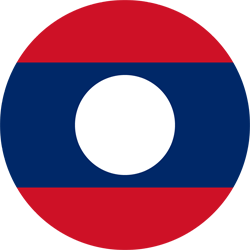I. The Inception and Development of the Tumen River Area Development Program
Originating in Changbai Mountain, Tumen River is 505.4 kilometers long. Its 490.4-kilometer upper and middle reaches are the boundary river between China and DPRK, while its 15-kilometer lower reaches is the boundary river between Russia and DPRK. In a broad sense, Tumen River area refers to Yanbian Korean Autonomous Prefecture in Jilin, China, the central and southern part of the Primorsky Territory in the far east of the Russian Federation and the Rajin-Sonbong Area in DPRK. This area is not only the contiguous area of China, Russia and North Korea, but also the geographical center in Northeast Asia and the only direct thoroughfare to the Sea of Japan over land.
The Tumen River Area Development Program was first raised by Chinese experts and scholars in the 1990s. On July16-18, 1990, jointly sponsored by Chinese Association of Asia-Pacific Studies,EWC and UNDP, the Conference on Northeast Asia Economic and Technical Cooperation was held in Changchun. The central topic of this conference was the development of Tumen River area and regional cooperation in Northeast Asia. In August 1991, the second conference was held. At these two conferences, for the first time, Chinese experts advocated the idea of developing a regional golden triangle by exploiting Northeast Asia's geographical advantages and suggested international academic research. Henceforth, the development of Tumen River area began to receive attention from the international community.
The development of Tumen River area received widespread attention from the international community. In 1991, the United Nations Development Program formally presented “Tumen River Area Development Program" and placed it in the list of key projects of promoting the cooperation between Northeast Asian countries. In October 1991, UNDP convened a conference on TRADP in Pyongyang. At this conference, Northeast Asian countries reached a basic consensus on this cooperative development program. Under this premise, the Program Management Committee of TRADP was established. In February 1992, UNDP convened the first PMC meeting, to which China, DPRK, Republic of Korea and Mongolia sent their representatives. Russia and Japan also attended the meeting, though as observers. Subsequently, UNDP formulated and promulgated “Tumen River Area Economic Development Strategies", planning to attract an investment of US $30 billion in 20 years and build the Tumen River Delta into “Hong Kong, Rotterdam and Singapore of Northeast Asia". According to the specifications made by international experts in 1994, Tumen River Area covers an area of almost 70 000 square kilometers, including 42 700 square kilometers of China's Yanbian Korean Autonomous Prefecture, 15 000 square kilometers of North Hamgyong Province close to Tumen River in DPRK and 10000 square kilometers in the southern part of Vladivostok, Russia.
By the end of 1995, UNDP organized six PMC meetings and conferences of experts for many times, also it carried out many planning and research programs. In December 1995, at the sixth PMC meeting, China, Russia and DPRK Signed “Agreements on the Establishment of the Coordination Committee for Tumen River Area Development"; the aforementioned three countries plus Mongolia and the ROK also signed the “Memorandum of Understanding on Environmental Problems Relating to the Tumen River Economic Development Area and Northeast Asia" and “Agreements on the Establishment of the Consultative Commission for the Development of the Tumen River Economic Development Area and Northeast Asia".
These two agreements and the memorandum of understanding, which stand for a change in cooperation progress from research to actual development as the major task, are the milestone in the international cooperation progress. According to these three documents, China, Russia, DPRK, Mongolia and ROK established Consultative Commission for the Development of the Tumen River Economic Development Area and Northeast Asia, which is in charge of the cooperation between the five countries and sustainable development. The three countries along the Tumen River---China, Russia and DPRK formed Coordination Committee for Tumen River Area Development, which mainly deals with economic development affairs, especially the promotion of trade and investment. UNDP also set up the Tumen Secretariat in Beijing. From then on, this great cross-century project started its operation and regional economic cooperation entered into a phase of substantive development.
II. Achievements and Problems in Tumen River Area Regional Cooperation
Tumen River Area Development Program is an international medium- and long-term project. In line with UNDP's planning, this program will take at least 20 years from start-up to trade and investment liberalization, so the implementation of this program will be phased over 20 years. Tumen River Area Development Program received active responses from neighboring countries. They took many concrete measures respectively in a bid to promote international cooperation.
Tumen River Area Development Program was greatly valued and strongly supported by Chinese government since its deliberation. As far as China is concerned, the development of Tumen River Area is conducted with Hunchun as the key and Yanbian Prefecture as the hinterland. Since Tumen River Area regional cooperation entered into the execution stage in 1996, China adhered to the principle of “opening-up promotes greater development, greater development boosts opening-up"and defined the main goals of Tumen River Area development as “establishing customs,going overseas,attracting investment and training". Through adopting a series of measures, the construction of Tumen River Area has achieved substantive progress. First, by signing agreements on harbor-sharing with Russia and DPRK and reaching agreements on opening sea-, air- and land-coordinated transport routes for goods and passengers, China has tentatively attained the goal of going overseas via rented harbor in this area. Second, as a state-level development zone, the infrastructure construction of Hunchun Border Economic Cooperation Zone is improving day by day. Noticeable results have been achieved in business and investments attraction; the total supply and demand has been constantly expanded. Since the development program was implemented, Hunchun has conducted energy, transport, telecommunications network and other infrastructure construction, whereby its investment environment has greatly improved. Lastly, with the development of Tumen River Delta, foreign trade and border tourism in Tumen River area are flourishing. Apart from the border trade with Russia and DPRK, the volume of spot and transit trade with Japan and ROK has increased constantly; the trend of tourism development in Changbai Mountain and Hunchun area is also very vigorous.
Besides China, other countries concerned adopted a fairly active attitude toward Tumen River Area Development. To participate in the development of Tumen River Area, DPRK established a free trade zone in Rajin-Sonbong area, which lies in the lower reaches of Tumen River adjacent to China. This free trade zone is directly under the administration of DPRK's central government. Chongjing, Rajin, Sonbong and other harbors are opened to the outside world. Furthermore, DPRK's government drew up an overall plan, laid down various rules and regulations and formulated a series of preferential policy for departure, exit, taxation, land use, foreign investment and tariff. Moreover, North Korean government has been increasing investment in this area in order to strengthen the construction of railway, highway, harbor, telecommunications network and other infrastructure construction. Russia treated Tumen River Area development as an entry point of getting involved in Asia-Pacific affairs and held an active attitude consequently. It drew up a Great Vladivostok Plan and a development plan for its Primorsky Territory, ratified the establishment of Nakhodka and Vladivostok free economic zones and opened such harbors as Vladivostok, Nakhodka, Zarubino and Posyet. In order to step onto the world arena via the Sea of Japan, Mongolia also took an active attitude toward Northeast Asian cooperation. In recent years, to participate in Tumen River Area Development Program, Mongolia has put forward measures of improving its eastern railway network. Proceeding from their own interests, ROK and Japan have shifted their overseas investment to Tumen River area. In the past few years, these two countries strengthened their research and increased their investment in Tumen River Area international cooperation.
Complementary cooperation, as well as fierce competition, exists in the international development of Tumen River area. As a result, there are some problems in the progress of cooperation. For example, due to the significant differences in social system, ideology, economic structures and technological level between the neighboring countries concerned, the international cooperation for Tumen River Area is still at a preliminary stage with loose cooperation forms. Lack of extensiveness and closeness, bilateral cooperation is basically the main form. As far as China is concerned, the ununified understanding of Tumen River Area international cooperation, the out-of-tune actions and shortage of development funds have become the main problems in affecting the development results.











.png)



.png)




